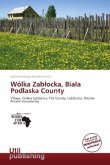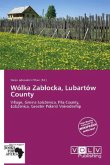High Quality Content by WIKIPEDIA articles! The Great Zab forms the approximate boundary of the Kurdish-populated region of Iraq and is used as the political boundary of the Kurdish Autonomous Region. In 750 CE, the Great Zab was the scene of the Battle of the Zab between the Umayyads and the Abbasids. The yet unfinished Bekhme Dam on the Great Zab, near Shaqlawa, Arbil Governorate, could control 14.4 km³ of water for hydroelectricity and irrigation. Work on the dam began in the late 1970s, but halted during the Iran-Iraq War and in 1991 due to the Gulf War and the economic sanctions imposed on Iraq by the United Nations afterwards. Before the Assyrian Genocide during World War I, the Great Zab was a major river for the Assyrian (also known as Chaldean and Syriac, among other names) population in the Hakkari region in modern-day southeastern Turkey. Because of this, as well as its ancient importance as a basis for the Assyrian civilisation, the Great Zab is represented on the Assyrian flag by four white streams flowing from the flag's centre.
Bitte wählen Sie Ihr Anliegen aus.
Rechnungen
Retourenschein anfordern
Bestellstatus
Storno








